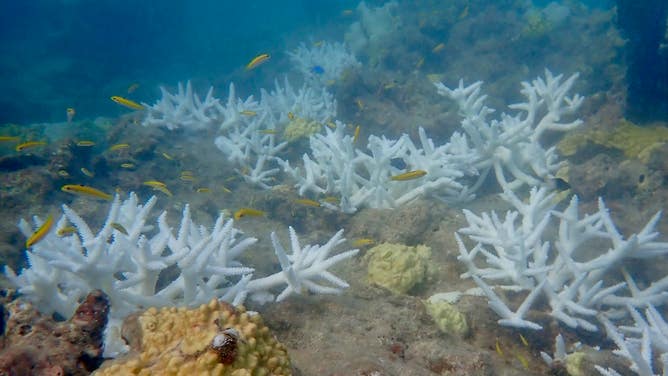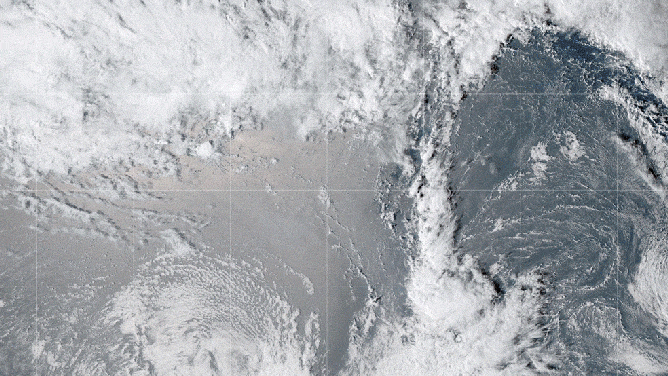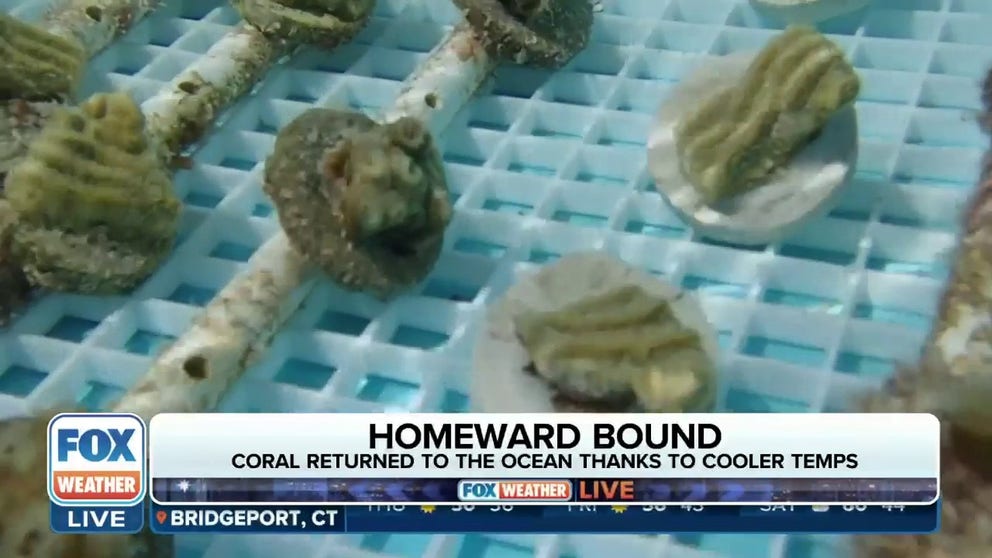Florida, Caribbean coral reefs showing signs of another mass bleaching amid early heat stress
NOAA Coral Reef Watch Program is forecasting a repeat of last summer which was already considered unprecedented. Sea surface temperatures are already causing heat stress on coral reefs in the Caribbean even earlier than last year.
Fourth global coral bleaching event underway
NOAA scientists confirmed this week a global coral bleaching event is underway. NOAA Coral Reef Watch Coordinator Derek Manzello joins FOX Weather to talk about the global bleaching event and why coral reef habitats are important to ocean ecosystems.
NOAA scientists say coral reefs in the Caribbean are already showing early signs of heat stress in April, indicating another mass bleaching event in the Caribbean and Florida could happen this summer. However, the heat is starting even earlier this year.
The fourth-ever global coral bleaching event is underway, with bleaching in all ocean basins. Record sea surface temperatures led to heat stress on corals in Florida and the Caribbean beginning last spring and continuing for weeks into the summer.
Coral animals rely on single-celled algae, which produce food for corals through photosynthesis and are how corals get their color. When temperatures get too hot, even just 2 to 3 degrees above average, instead of photosynthesis, the algae produce toxins that create free radicals. Coral biologists call this oxidative stress, which turns the algae "helpers" into killers.
AFTER ‘FIRST OF ITS KIND’ HEAT WAVE, FLORIDA CORALS BEGIN RETURN TO OCEAN
In 2023, coral biologists called the temperatures "unprecedented" because they started so early and stayed at bleaching levels for so long.
NOAA’s Coral Reef Watch Program Coordinator Derek Manzello said reefs in the Caribbean and Florida are already facing a repeat of last year.

Small yellow fish swim around bleached coral.
(NOAA Florida Keys National Marine Sanctuary / NOAA)
As of April 2024, heat stress is accumulating in Caribbean reefs and happening weeks earlier than in 2023.
"This is alarming because this has never happened so early in the year before," Manzello said. "And to say that is alarming because last year we experienced the same thing."
The Atlantic Ocean bleaching event was so severe last summer that NOAA's Coral Reef Watch added three new alert levels to five to categorize the heat stress occurring. The previous scale maxed out at alert level 2.
Cooldown needed for coral reefs
"For an alert level five, we are estimating that approximately 80% or more of that particular reef may die," Manzello said. "This is analogous to a category five hurricane or cyclone."
Reefs have a glimmer of hope from the impending La Niña climate pattern and a potentially active Atlantic hurricane season.
Tropical cyclones can stir up the water, cooling sea surface temperatures below the bleaching level. Last year, Manzello said everywhere in the Caribbean saw record heat stress except for Bermuda because of two hurricanes.
"Hurricanes and cyclones are now good things for coral reefs," he said.
As to why the marine heat wave continues, Manzello said there are several theories of direct contributing factors but "this wouldn’t be happening without climate change."
One possible factor was the 2022 eruption of the Tonga Volcano, contributing to overall global warming.

The GOES-17 satellite captured images of an umbrella cloud generated by the underwater eruption of the Hunga Tonga-Hunga Ha’apai volcano on Jan. 15, 2022. Crescent-shaped bow shock waves and numerous lighting strikes are also visible.
(NASA Earth Observatory image by Joshua Stevens using GOES imagery courtesy of NOAA and NESDIS / NASA)
According to NASA, Tonga sent enough water vapor into the upper atmosphere to fill 58,000 Olympic-size swimming pools. The water vapor acted as a greenhouse gas, temporarily amplifying global warming. The warming impacts could last about five years.
DEVELOPING LA NINA TO BRING SUMMER SCORCHER TO MILLIONS WITH SOAKING STORMS IN EASTERN US
Efforts underway earlier this year to reduce coral bleaching
Last summer’s bleaching event triggered widespread actions by the coral restoration community to bring more corals than ever into onshore tanks to save them from bleaching.
The Key Marine Laboratory kept thousands of corals safe in onshore tanks until temperatures were safe to begin returning the corals to the ocean.
Florida corals making a comeback after ocean heat wave
Cynthia Lewis, Director of Keys Marine Laboratory, explained to FOX Weather how her lab attempted to rescue coral from record summer water heat. Hurricane Idalia helped to remedy the temperature spike and some of the corals are making it back to sea.
Manzello said marine labs are preparing for a repeat of last summer.
Globally, countries are closing off areas to tourists to prevent further harm to the reefs, including most recently in Thailand, where officials closed Pling Island to reduce coral bleaching.
It's unclear when the current global coral bleaching event will subside.
The previous global event lasted from 2014 to 2017 and affected 56% of corals worldwide. According to NOAA, the ongoing bleaching event has already surpassed those impacts with 60% of reefs experiencing bleaching-level heat.

